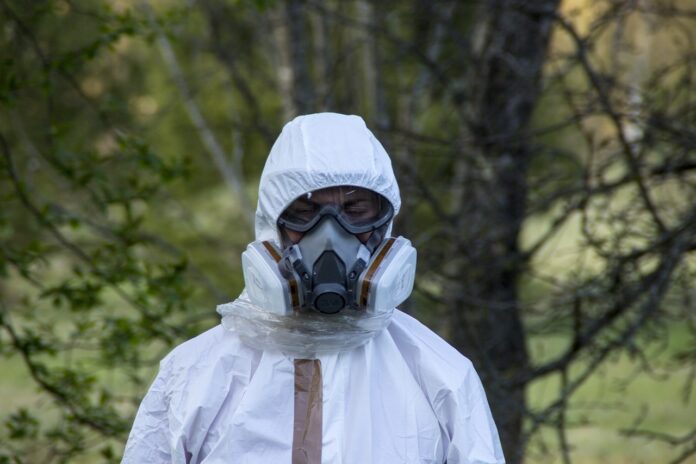Asbestos has become notorious for its detrimental health effects. Despite its ban in many countries, asbestos still lurks in numerous workplaces, posing a significant threat to workers’ health. Understanding the risks of asbestos exposure is crucial for employers and employees to mitigate its harmful effects. This article explores the dangers of asbestos, its historical context, health risks, regulations, and measures to ensure safety.
IMAGE SOURCE: https://pixabay.com/photos/nature-wood-outdoors-tree-3216890/
Historical Context
Asbestos has a long history of industrial use, dating back to ancient times. Its fibrous nature and heat, electricity, and corrosion resistance made it an ideal material for various applications, including insulation, roofing, and fireproofing. However, it wasn’t until the 20th century that the health hazards of asbestos became widely recognized. The link between asbestos exposure and adverse health effects was first documented in the early 20th century, with reports of lung diseases among asbestos miners and textile workers. By the mid-20th century, scientific studies conclusively established the connection between asbestos exposure and diseases such as asbestosis, lung cancer, and mesothelioma—a rare but aggressive form of cancer.
In New York, like many other regions around the world, the legacy of asbestos use is evident in numerous older buildings and infrastructure. From skyscrapers to schools and hospitals to homes, asbestos-containing materials were once commonplace in construction projects due to their affordability and fire-resistant properties. For this reason, there are already many job sites in New York with asbestos exposure that require careful management and regulation. Rules and guidelines were implemented to protect workers and the public from exposure. Despite mounting evidence of its dangers, asbestos was used extensively in construction throughout the 20th century. It wasn’t until the 1970s and 1980s that regulatory agencies began imposing restrictions on asbestos use, leading to its eventual ban in many countries.
Health Risks
Exposure to asbestos fibers poses serious health risks, primarily affecting the respiratory system. With asbestos-containing materials disturbed, tiny fibers are released into the air, where they can be inhaled or ingested. Once inside the body, these fibers can become lodged in the lungs, causing inflammation over time. One of the most well-known diseases associated with asbestos exposure is asbestosis, a progressive and irreversible lung condition characterized by fibrosis and reduced lung function. Symptoms of asbestosis include chest tightness and shortness of breath. While there is no cure for asbestosis, supportive treatments can help manage symptoms.
Another deadly consequence of asbestos exposure is lung cancer, which can develop years or even decades after the initial exposure. Smoking dramatically increases the risk of developing asbestos-related lung cancer, as the combined effects of smoking and asbestos exposure have a synergistic impact on lung tissue. Perhaps the most feared outcome of asbestos exposure is mesothelioma, a rare but aggressive cancer. Mesothelioma has a long latency period, often manifesting 20-50 years after exposure, making early detection and treatment challenging. Unfortunately, mesothelioma prognosis is typically poor, with limited treatment options and low survival rates.
Regulations and Guidelines
In response to the awareness of asbestos-related health hazards, governments around the world implemented regulations to protect workers and the public from exposure. These regulations typically focus on asbestos management, handling, and removal in the workplace. For instance, the Environmental Protection Agency (EPA) regulates asbestos in schools, public buildings, and other non-occupational settings to minimize exposure risks. In addition to government regulations, various professional organizations and industry groups have developed guidelines and best practices for managing asbestos in the workplace. These guidelines cover many topics, including asbestos identification, risk assessment, worker training, and personal protective equipment (PPE) usage.
Ensuring Workplace Safety
Protecting workers from asbestos exposure requires a comprehensive approach encompassing risk assessment, exposure prevention, and employee education. Employers must offer a safe working environment free from asbestos hazards. First and foremost, employers should conduct thorough asbestos surveys and risk assessments to identify and evaluate potential exposure risks in the workplace. This may involve inspecting buildings for asbestos-containing materials, assessing the condition of these materials, and determining the likelihood of fiber release during normal operations or maintenance activities.
Once asbestos-containing materials are identified, employers must implement control measures, minimizing the risk of exposure. This may include encapsulation or enclosure of asbestos materials to prevent fiber release, implementing engineering controls such as ventilation systems or wet methods to suppress dust, and establishing restricted access areas to prevent unauthorized personnel from entering contaminated areas. When asbestos removal is necessary, employers must ensure that the process is carried out by professionals following strict safety protocols. This includes proper containment of the work area, appropriate PPE, and proper disposal of asbestos waste by regulatory requirements.
Despite its widespread ban in many countries, asbestos remains a significant occupational health hazard. The latency period between exposure and the onset of asbestos-related diseases underscores the importance of proactive measures to protect workers from exposure risks. By understanding the dangers of asbestos, complying with regulations, and implementing effective control measures, employers can create a safer workplace environment and prevent needless suffering and loss of life due to asbestos-related diseases.























